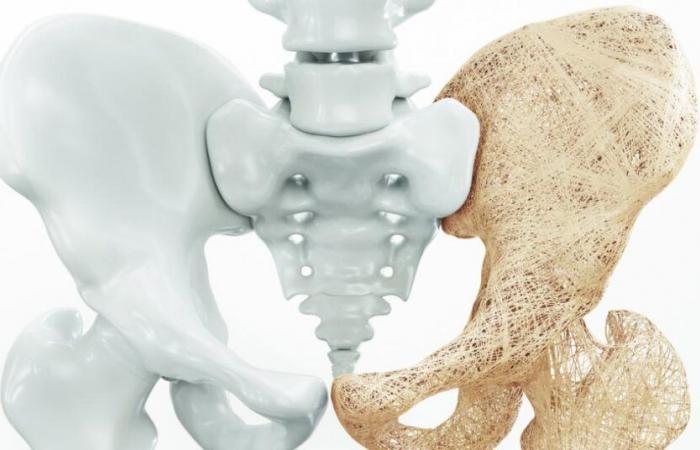1. What is osteoporosis? A metabolic skeletal disease causing a reduction in the amount of bone mass which therefore weakens the bones. In our country, more than 600,000 people suffer from it. This loss of mass causes the bones to lose their strength, increasing the risk of fracture. “A simple fall or slight muscular effort can lead to a fracture,” emphasizes Dr. Mélissa Grillo. “The most common osteoporotic fractures are those of the wrists, vertebrae and, in older people, the neck of the femur. »
2. Who are the people at risk? There is a natural aging of bones from the age of 30-40. The reduction in bone mass therefore increases the fragility of the skeleton. Elderly people are therefore more at risk. Osteoporosis also affects more women (1 in 3 women) than men (1 in 5 men). “Other risk factors are early menopause, family predispositions, prolonged use of certain medications (corticosteroids, certain chemotherapies, etc.), insufficient physical activity, certain metabolic pathologies, calcium and vitamin D deficiency, eating disorders, smoking, alcohol consumption,” specifies Dr. Mélissa Grillo.
3. How to prevent it? A healthy lifestyle, regular physical activity and sufficient intake of calcium and vitamin D are essential for the development and maintenance of bones, thus significantly reducing the risk of fracture. Early detection also allows effective management in the event of proven bone loss.
4. Why is it important to get tested? “The earlier osteoporosis is detected, the better it is managed,” emphasizes Dr. Mélissa Grillo. “Screening is carried out via bone densitometry. This is a painless radiological examination lasting around ten minutes, which allows bone mineral density to be measured, that is to say the bone mass per unit of body surface area and therefore the fragility of the bones. At the Saint-Luc Bouge Clinic, it is offered in particular after a fracture in patients at risk but also in patients with other risk factors as mentioned above. »
uri
Health






